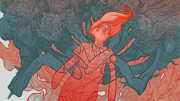Numbers are pretty amazing things . . . I won’t pretend to know much about them, and I freely admit that I have a restraining order against pre-calculus, but I’m still fascinated by digits.
Think about pi. By multiplying pi (3.14159265, etc.) and the square of the circle’s radius, one may find its area. Isn’t that amazing?
What I find even more astounding is the fact that pi can be calculated out to a seemingly infinite number of decimal points — we’re currently at 2.7 trillion decimal points and counting — a strong indicator that our human concept of “perfection” is deeply flawed.
That’s not to say that people haven’t tried to express perfection as a number — have you ever heard of the golden ratio?
The golden ratio is a concept first studied by the ancient Greeks, which they believed had a strong influence on such seemingly arbitrary concepts as truth and beauty.
Some Greeks believed that a ratio of 1:1.6180339887 was one of the foundations of aesthetics and that by using this ratio an architect, painter, sculptor, etc. could create pleasing forms. Many have claimed that the golden ratio has been used extensively throughout history, in paintings and art, but the general consensus now is that this is an exaggeration. That’s not to say that it isn’t pervasive though.
Adjacent numbers in the Fibonacci sequence, 1, 1, 2, 3, 5, 8, 13, 21, 34 . . . (derived by adding the two previous numbers to form the subsequent one) approach the golden ratio the higher you go and can be used to draw a golden rectangle — a rectangle in which the ratio of the smaller side to the larger one is 1:1.6180339887.
By starting with a large golden rectangle and drawing smaller and smaller ones within it (as in the drawing above), one may craft a golden spiral, a shape that can be found throughout nature, from sea shells to the arrangement of sunflower seeds on the flower.
This is not because of some kind of divine intervention, but because when cells organize, arranging themselves along the confines of the golden spiral is the most efficient shape, allowing them maximum contact with their neighbours while not leaving any big gaps.
The question now is: is it a coincidence that humans tend to find this spiral — and the golden ratio on which it is related — so aesthetically pleasing, or have we just been hardwired by evolution’s preference for its efficiency?
Personally I blame aliens and crop circles.



